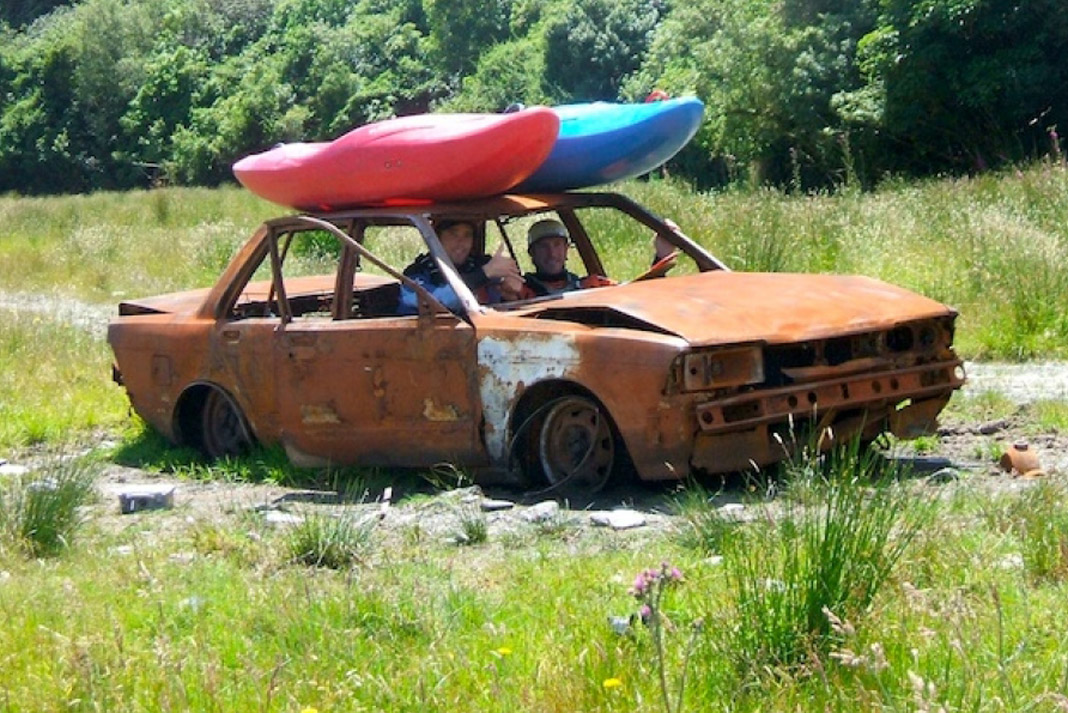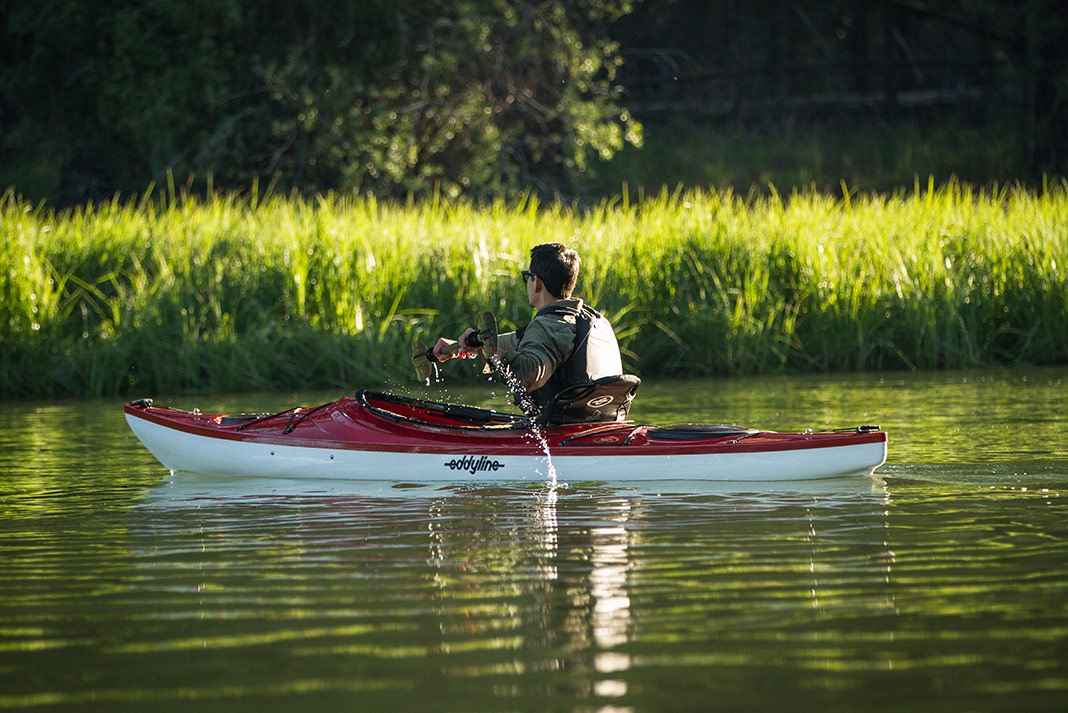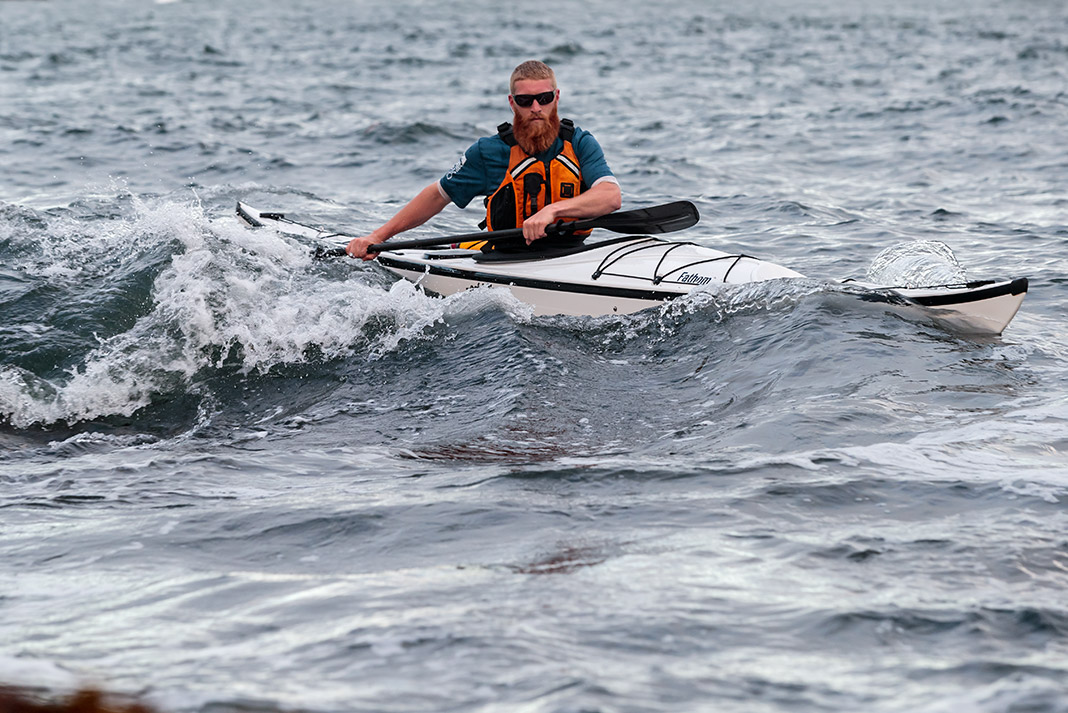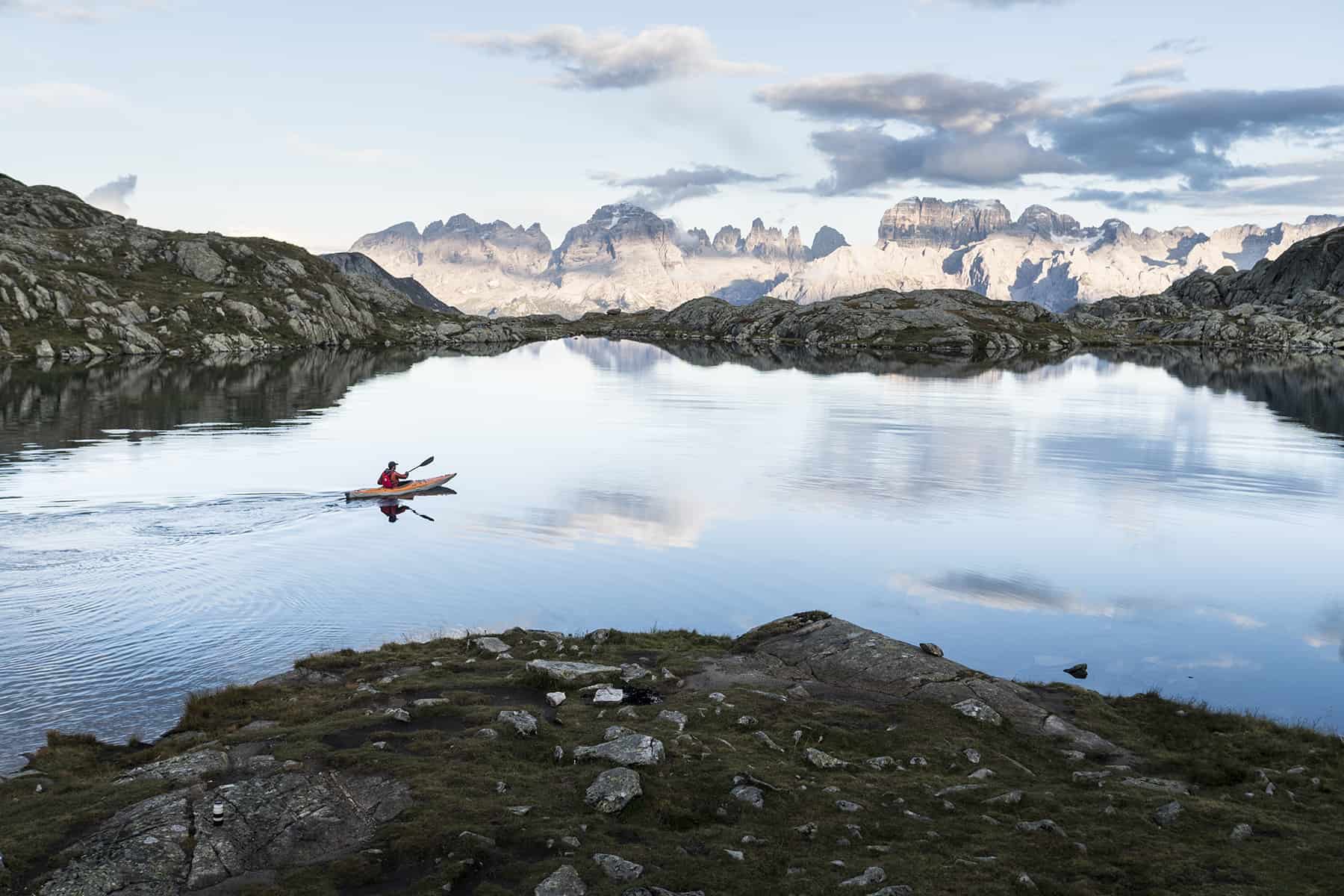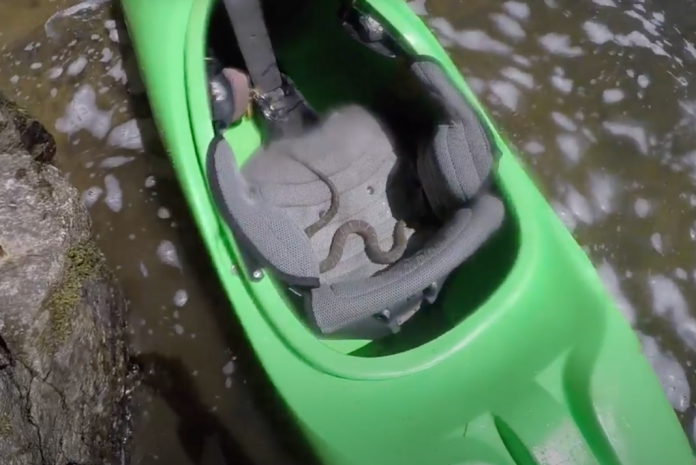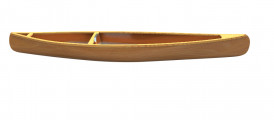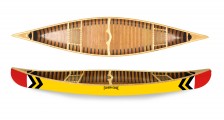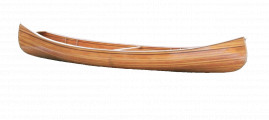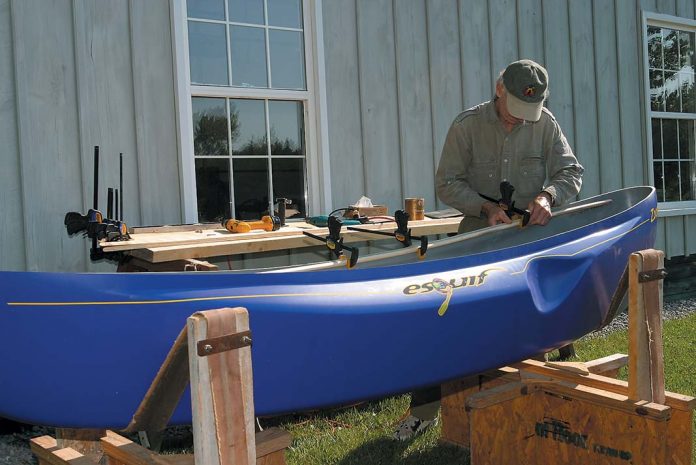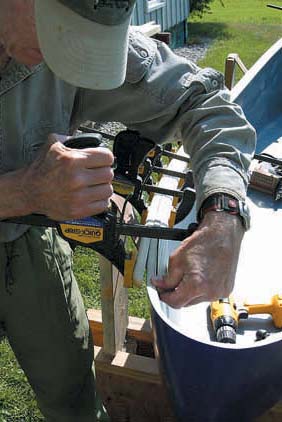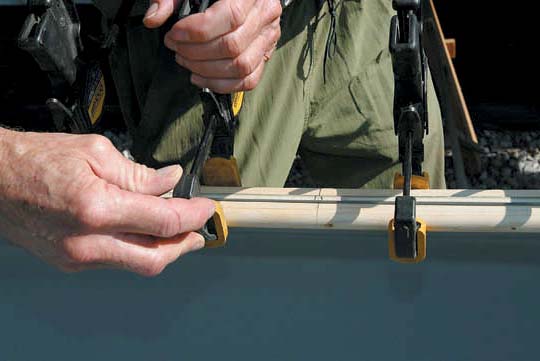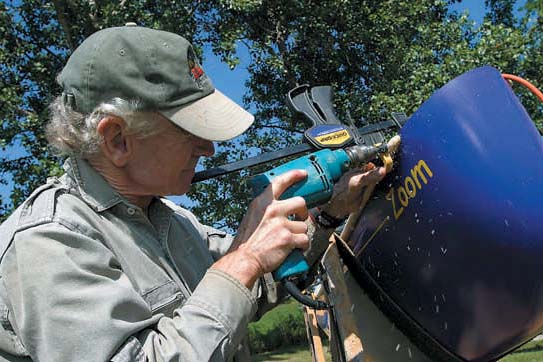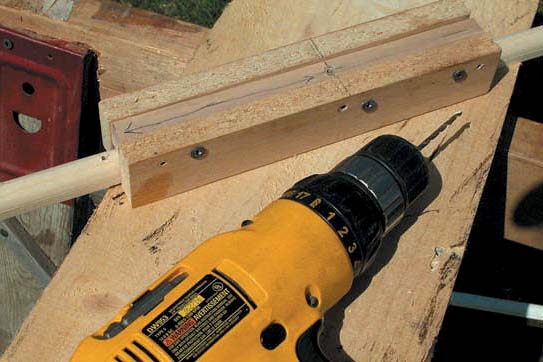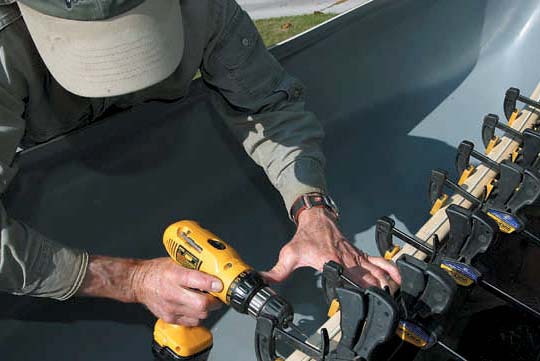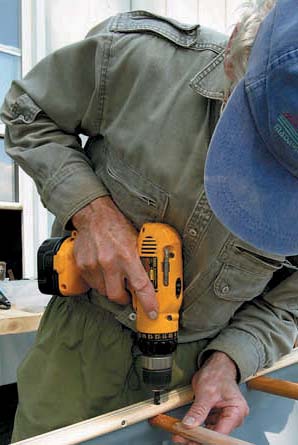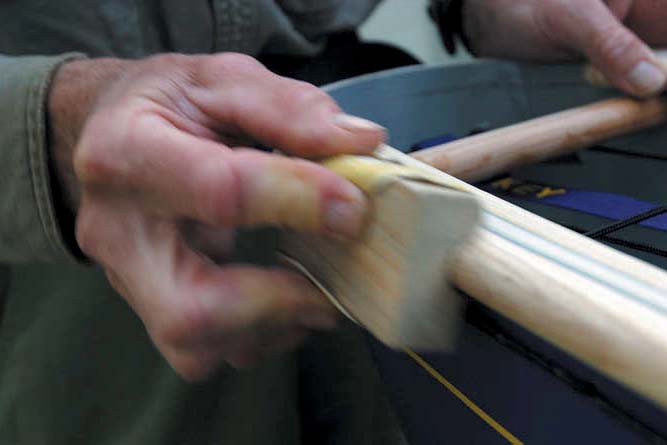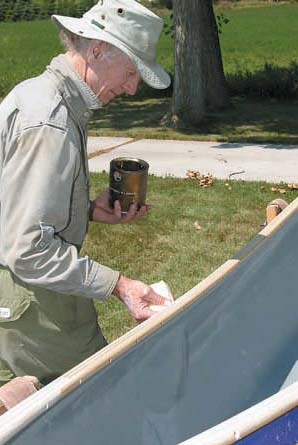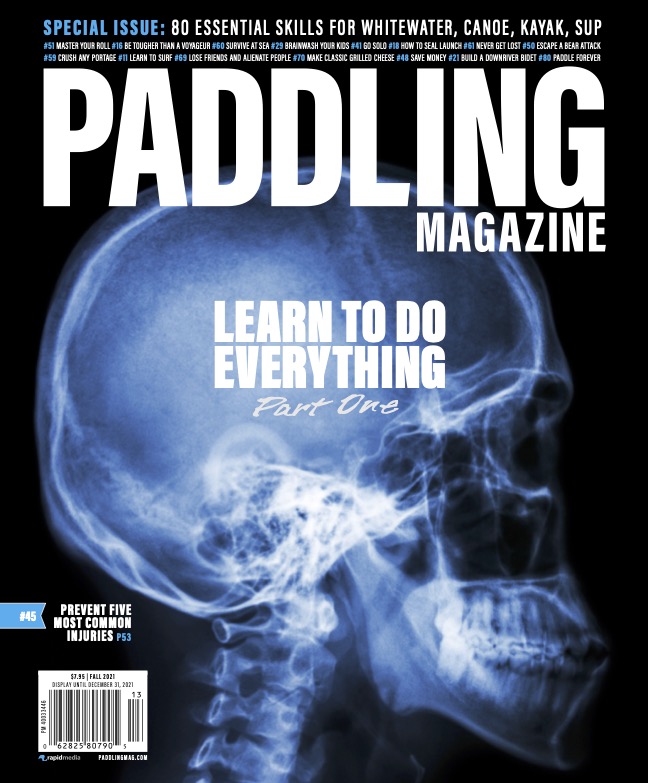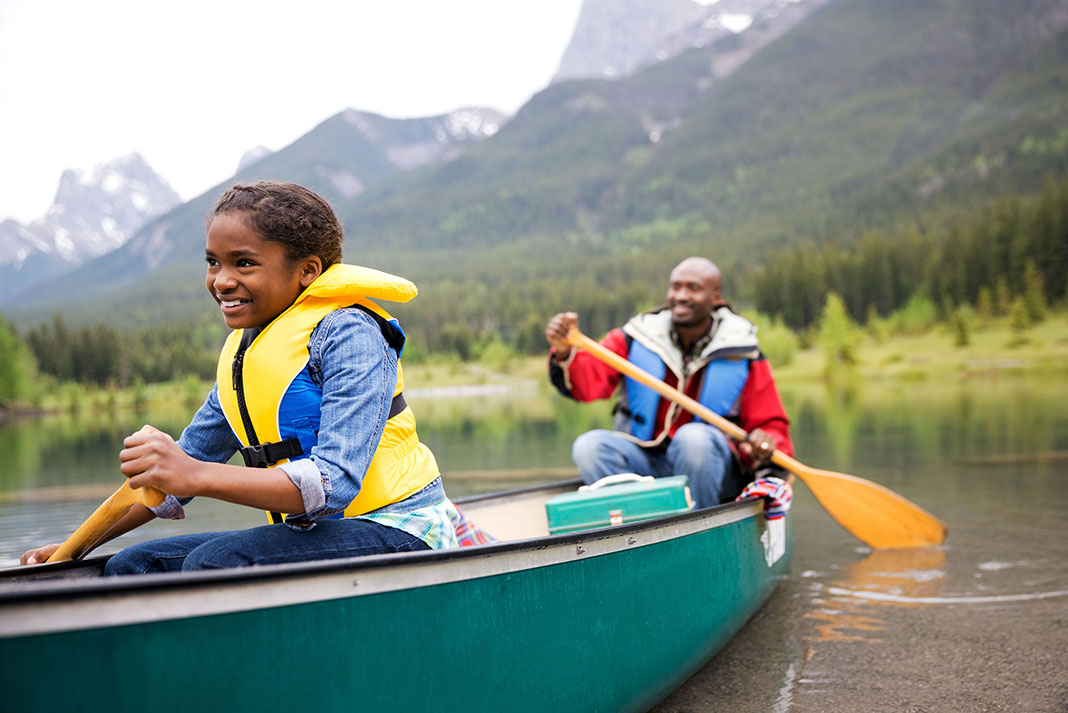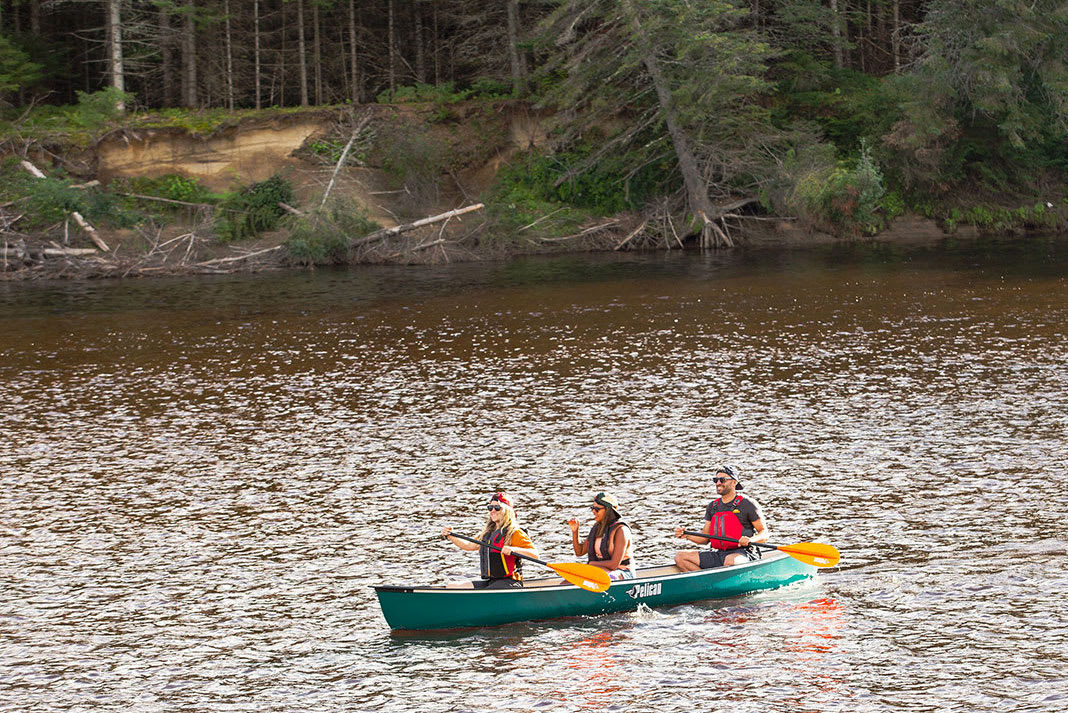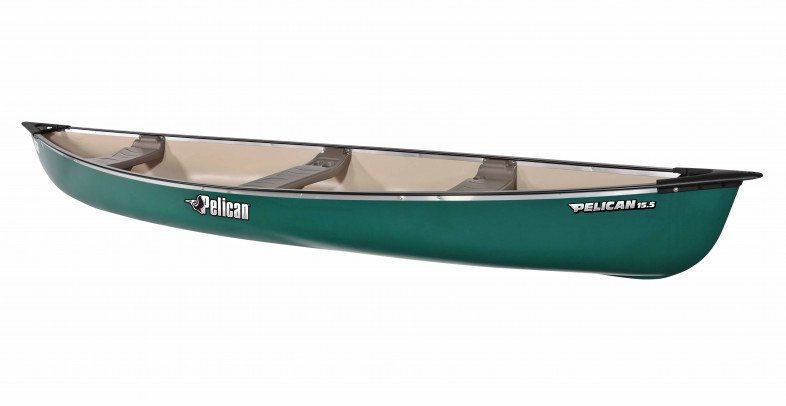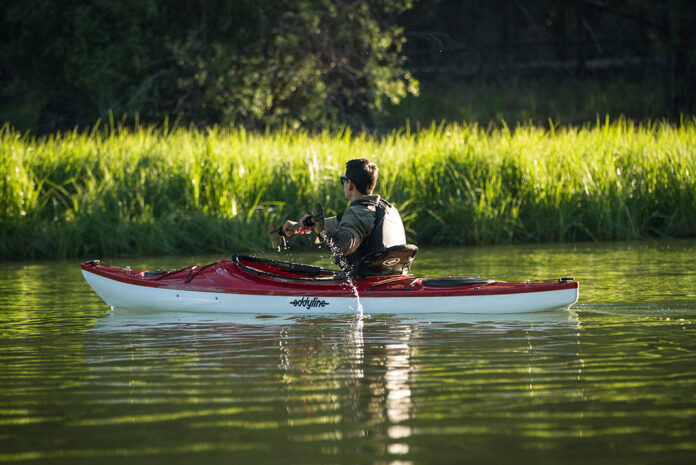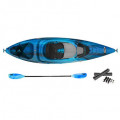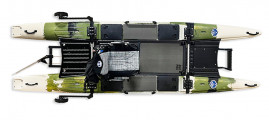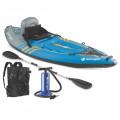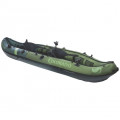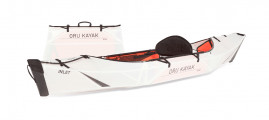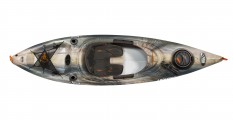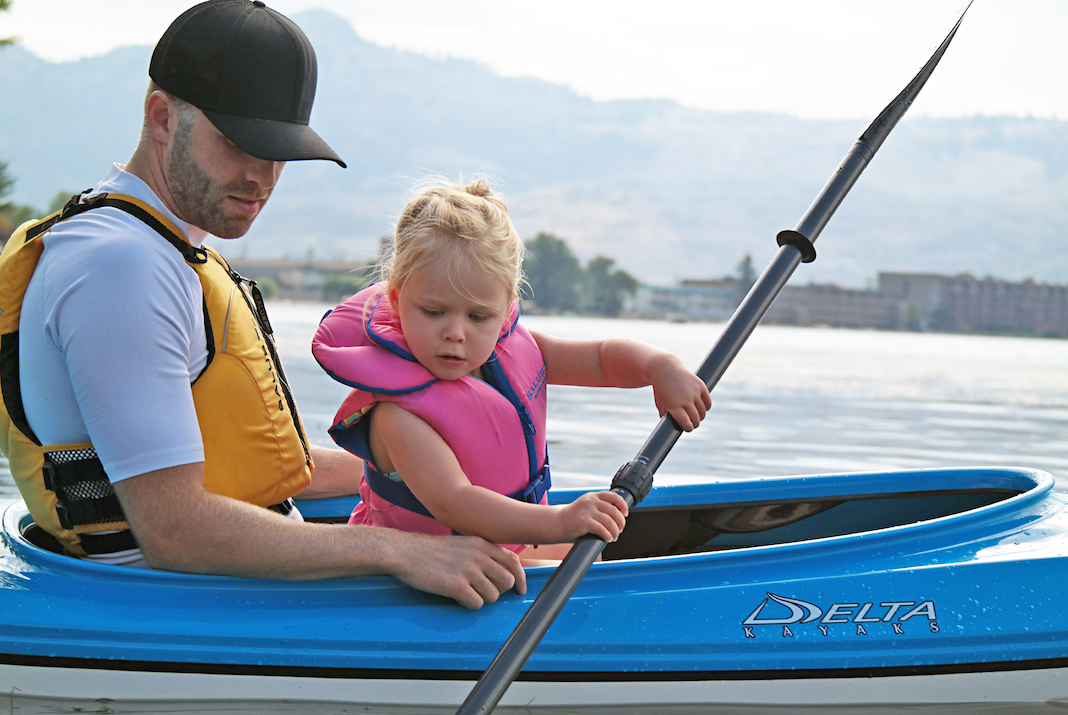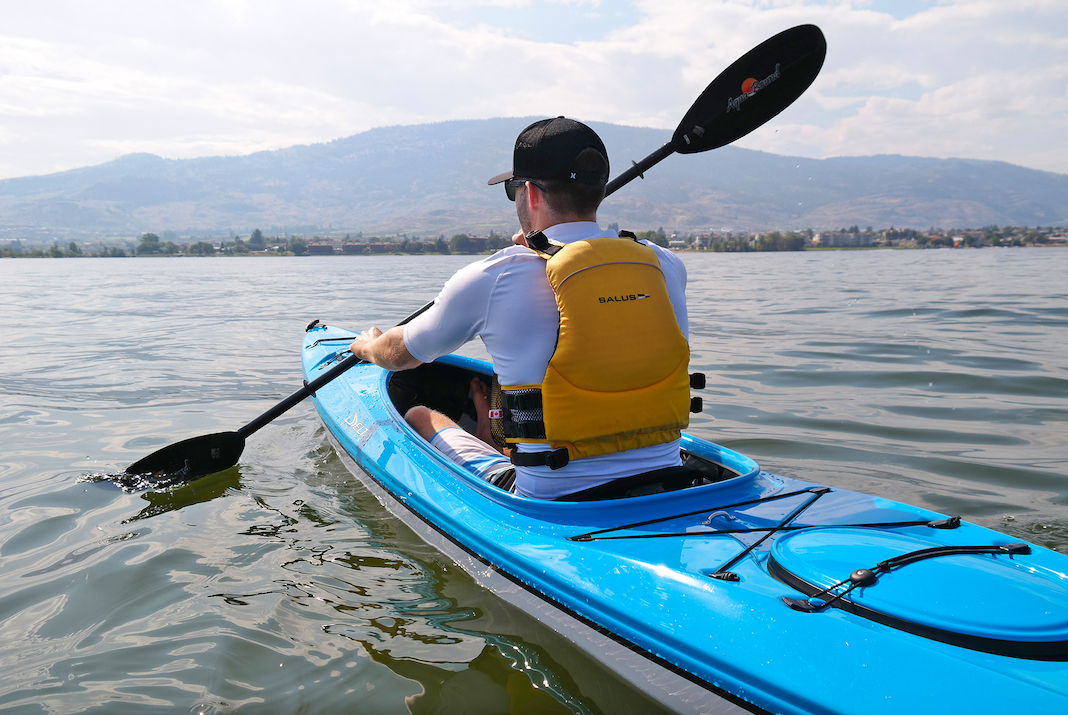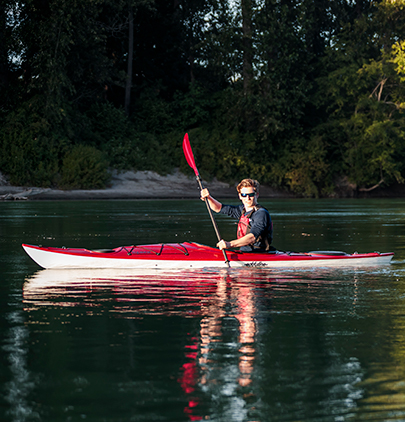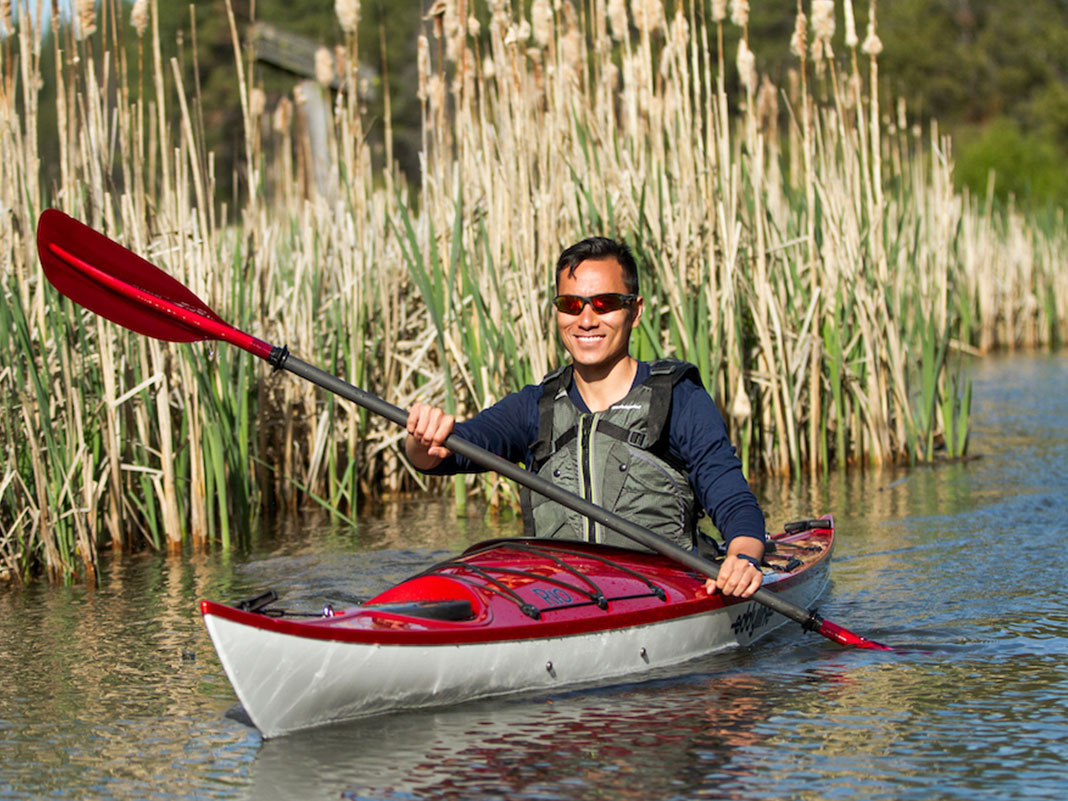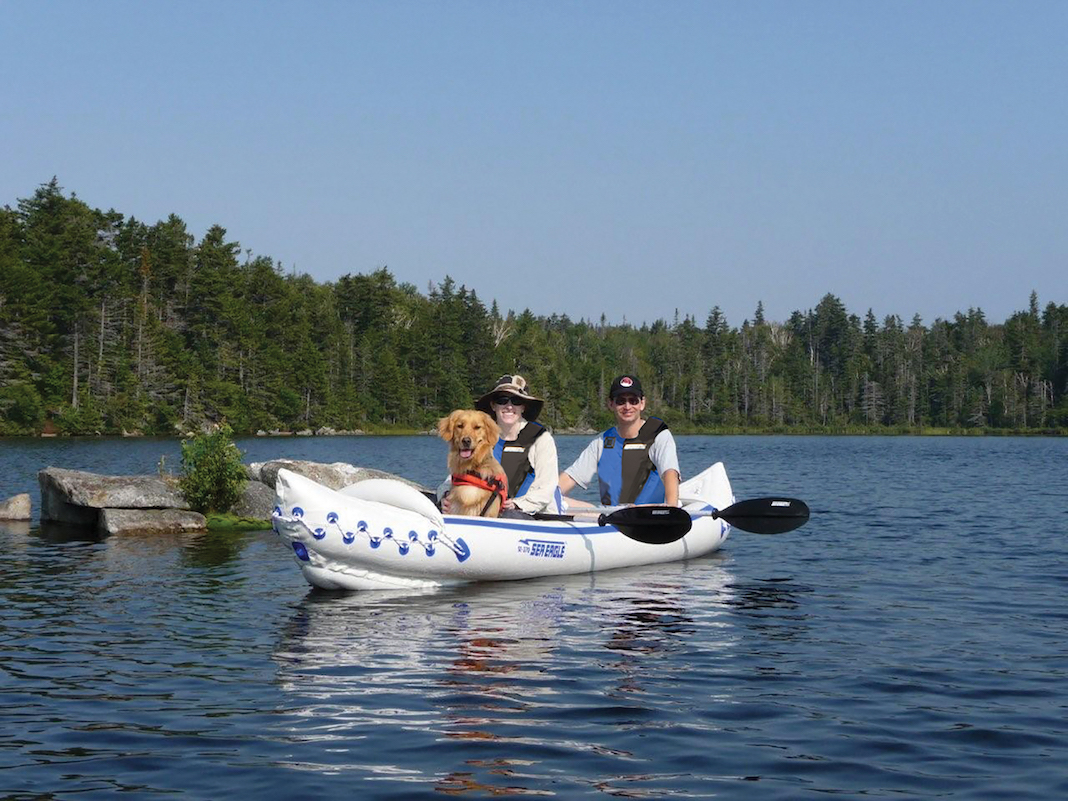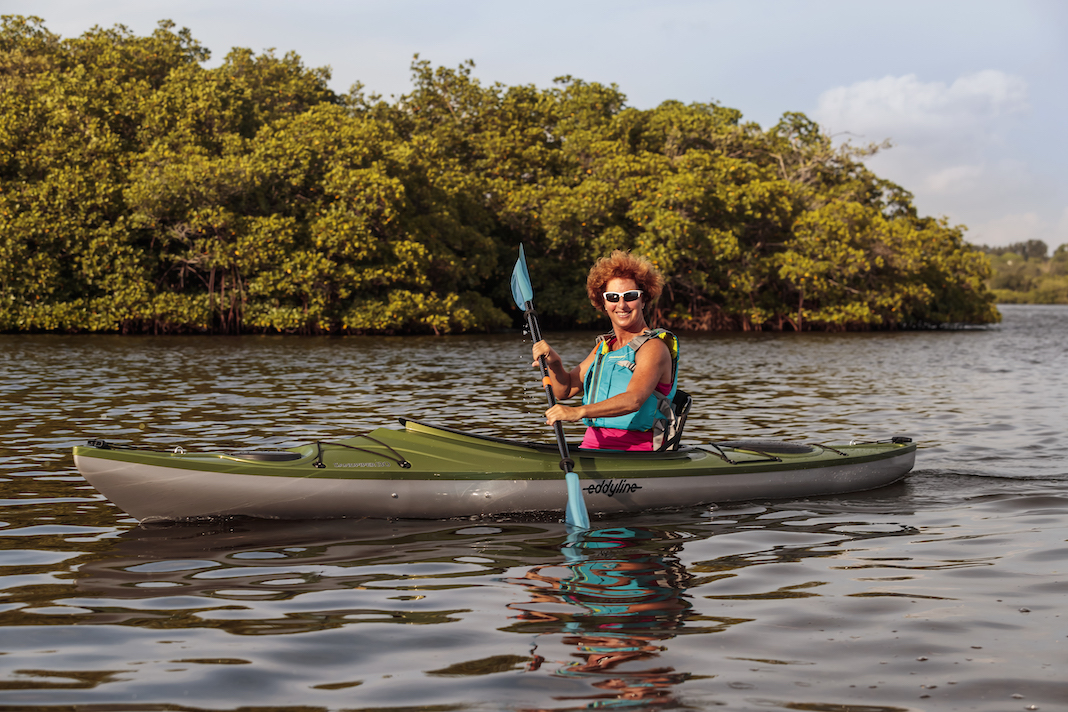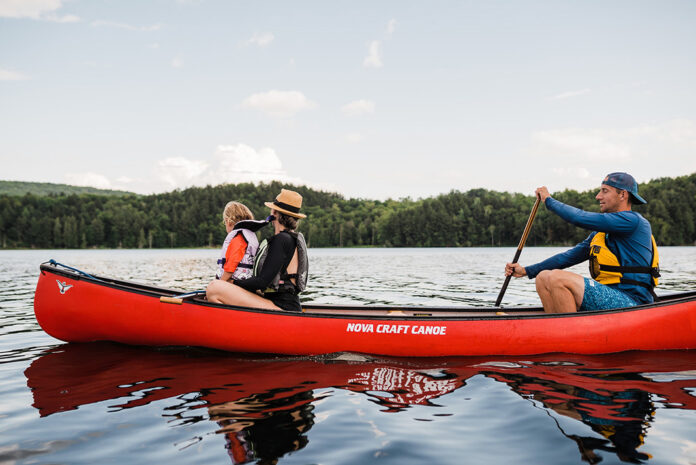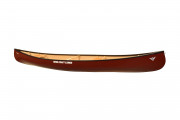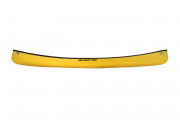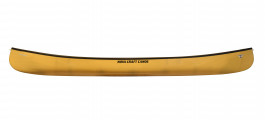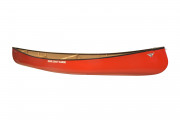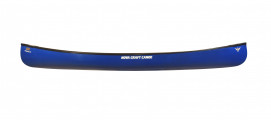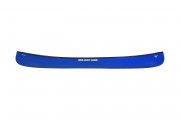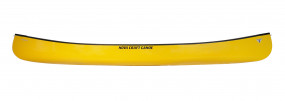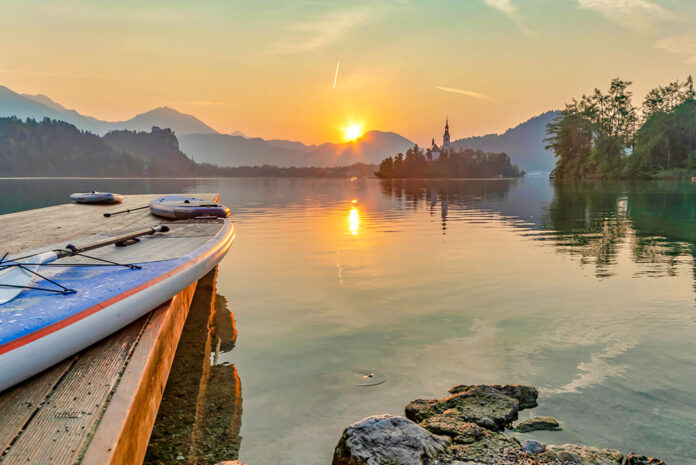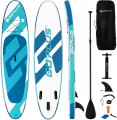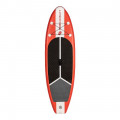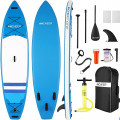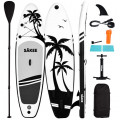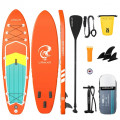At the dawn of modern kayak fishing, a kayak came along that was a complete departure from any kayak before and a precursor to almost every fishing kayak to follow. The brainchild of Tim Niemier, the father of sit-on-top kayaks, NuCanoe is a hybrid between a canoe and a kayak. It was designed, as Niemier says, “to get a million butts in kayaks.”
Since setting the standard for high-capacity and stable paddling platforms, NuCanoe has added more models to the family, always keeping with the tradition of versatility and easy access.
NuCanoe kayaks come in six models, all focused on stability and versatility. With a wide open cockpit from bow to stern, the NuCanoe has the capacity of a canoe. But, the seat is low enough to use a double-bladed kayak paddle, making the NuCanoe easy to operate.
NuCanoe kayaks are wide with tons of capacity, making them popular for anglers looking to load the boat with fishing gear or hunting equipment. The open cockpit offers plenty of space to install accessories and large items like gear storage bins. Many NuCanoe models can be configured with two seats for a tandem kayak set up.
NuCanoe kayaks fit in the standup category with a wide and flat hull perfect for long days standing and casting. To further improve standup performance, NuCanoes have a broad, padded deck with plenty of space to move around.
The downside is that a boat with high capacity and great stability tends to be heavy and bulky. Standup kayaks are less responsive and harder to maneuver due to the flat hull and wide beam. NuCanoe kayaks are great for sheltered waters and inshore fishing, but the boats tend to be heavy and slow to paddle over long distances on open water.
The easy solution is to add propulsion options, NuCanoe can be propelled with a paddle, a pedal system or an electric or gas motor. The open deck and high volume are perfect for adding power options for increased range.
NuCanoe boats have long been popular with entry-level anglers looking for a reliable kayak to start kayak fishing. Today, the versatility of NuCanoe designs have made them popular with tournament anglers looking to rig motors and electronics while leaving plenty of capacity and space for tackle and gear storage.
Top picks: Best NuCanoe fishing kayaks for 2024
The following NuCanoe kayaks have received the highest star ratings by reviewers in our Paddling Buyer’s Guide. See and review all NuCanoe fishing kayaks here.
Best NuCanoe Fishing Kayaks
Shop for NuCanoe fishing kayaks
Follow the links below to the Paddling Buyer’s Guide where you’ll find every NuCanoe sit-on-top fishing kayak available, along with specs, prices, reviews and where to buy.
Shopping for a used NuCanoe fishing kayak?
After almost 20 years on the water, there are a lot of options for used NuCanoes. Since the first NuCanoe Classic, NuCanoe has added six designs to cover all fishing conditions. And almost every model has undergone changes and improvements over the years.
Older models are still a great choice, while newer models will have updated accessories and tweaked designs. As technology has changed, NuCanoe has updated features. Newer models may have better gear tracks or more rod holders. If the used boat you are considering doesn’t have the newer features, you may be able to add them later.
Each NuCanoe model has different options for seating and rigging. For example, NuCanoe offers a bench seat, soft seat, frame seat and 360-degree seat for several models. Choose a used boat with the seat you need. Or, plan to change the seat after purchase.
For more tips on what to look for when selecting a used fishing kayak, read our article How To Buy A Used Fishing Kayak.
NuCanoe kayak buying guide
NuCanoe kayaks come in six models, with different lengths and widths, but all the boats have a wide, open deck and flat hull for excellent stability and versatility.
Classic
The original NuCanoe Classic is still available, now in two lengths. A wide-open cockpit and broad, flat hull give the Classic rock-solid stability and ample capacity to carry two paddlers. Options include a bench seat, low-profile seat or frame seat. Fewer features means the Classic makes a great kayak for those on a budget.
F10
For a small grab-and-go boat, look at the 10-foot F10 with basic rigging and a frame seat. The F10 is a great boat for small water and easy storage and transport. It’s also manageable for smaller paddlers.
Flint
Stepping up to the Flint, anglers get a sportier kayak with a shorter waterline and narrow bow, making it perfect for tight spaces and fun trips. The quick and nimble Flint is NuCanoe’s best river kayak.
Frontier
For bigger adventures, NuCanoe released the Frontier with tons of capacity and acres of open space to fill with camping, fishing and hunting gear. The Frontier is a step up from the Classic with more features like gear tracks and rod holders.
Pursuit
To paddle for the horizon through big water, the NuCanoe Pursuit is long and narrow, which improves tracking and speed. A large bow hatch and space behind the seat for a gear crate increase storage capacity.
Unlimited
The most recent addition to the line, the full-size NuCanoe Unlimited, is a capable paddle kayak with enough space and capacity to rig it with a motor, pedals and all the gear and electronics serious anglers often use. The Unlimited is targeted toward pro anglers looking for all the bells and whistles to make the most of their time on the water.
Choosing the best NuCanoe comes down to finding the boat that best fits your needs. For open water and big fishing adventures, choose the Pursuit, Unlimited or Frontier. To fish smaller water with a lighter, easy-to-own boat, look at the F10, Classic or Flint. Whether you’re fishing freshwater or salt, inshore or backwater, there’s a NuCanoe kayak for almost any type of fishing.
-
Is NuCanoe a good kayak?
NuCanoe kayaks have been around for 20 years. In that time, they have set trends and followed advancements to stay current. Many pro anglers choose a NuCanoe for sturdy construction and smart components.
-
Where are NuCanoe made?
NuCanoe kayaks and most components are made in the U.S., where NuCanoe is located. The kayaks are made in Wisconsin and the headquarters are in Washington State.
-
What are NuCanoe kayaks made of?
NuCanoe kayaks are made of rotomolded plastic.
-
NuCanoe accessories
NuCanoes can be updated with factory and aftermarket accessories. NuCanoe offers options for seats and propulsion, including a pedal system and motor mount. To make it easy to customize the boat, NuCanoe models have gear tracks and flat areas where you can add rod holders, storage gear and electronics.
-
NuCanoe dealers
With so many boats in circulation, it is never a challenge to buy a NuCanoe. NuCanoe dealers are located all over the country and boats are available online. Get a complete list of dealers at NuCanoe’s Find A Dealer page. You can also search NuCanoe Craigslist, NuCanoe Kijiji and NuCanoe eBay.
-
NuCanoe prices
The best thing about NuCanoe is the price. Anglers get a lot of kayak for a little money. A basic NuCanoe can be had for less than $1,000 with the most expensive models costing less than $2,000. Add a motor or pedal system to almost any NuCanoe model for about $1,000 dollars more.
-
NuCanoe forum
NuCanoe has an active social media community on Facebook and Instagram with owners and fans posting photos and stories connected with hashtags. On NuCanoe.com, owners can find out about the NuCanoe pro staff and participate in the owners’ portal for warranty, accessories and parts.
-
NuCanoe complaints
The most common complaint about NuCanoe comes from owners who weren’t prepared for how big and heavy the boats are. Most of the NuCanoe boats are focused on stability and capacity. This comes at the cost of speed and maneuverability. In open water under paddle power, the boats can be unwieldy to paddle very far. To remedy the problem, many owners add an electric motor to the larger models.
-
NuCanoe cost
NuCanoe sit-on-top kayaks cost less than similarly sized kayaks with the same features. Since they don’t offer a large bow hatch or complicated cockpit layout, NuCanoe models are less expensive to produce.
-
Weight of NuCanoe
NuCanoes favor stability and capacity, making them wider and heavier than a boat focused on performance. The smallest NuCanoe F10 is lightest at 66 pounds, but it’s only 10-feet long. The biggest boat, the Unlimited, pushes the scales at 84 pounds.
-
NuCanoe warranty
NuCanoe has a limited warranty on all boats. The warranty covers defects or damage due to workmanship or materials. The warranty only covers the original owner for three years.
Comparing NuCanoe
-
NuCanoe vs Hobie
Nucanoe and Hobie both make easy-to-use fishing boats with great features. Hobie kayaks are built around their MirageDrive pedal system. NuCanoe is a kayak and canoe hybrid focused on paddling, but with the option of adding a motor or pedal drive. Hobie makes one of the best pedal kayaks available.
If you want a great pedal kayak, you can’t beat Hobie. NuCanoe is a maker of paddle kayaks with an add-on pedal system. If you’re looking for a robust paddle kayak with an open cockpit, NuCanoe is the best choice.
-
NuCanoe vs Bonafide
NuCanoe and Bonafide have one thing in common, both companies make a great paddling standup kayak. While the NuCanoe can be rigged with a motor or pedal system, they are a paddling kayak at heart. Until Bonafide added a pedal model this year, they only made paddle kayaks. Unlike the NuCanoe’s wide, flat hull and open cockpit, Bonafide boats have a tunnel hull and traditional deck layout. Each hull design approaches the same problem from a different direction.
Bonafide’s tunnel hull creates stability and improves tracking with modified pontoons while the NuCanoe’s hull passes through the water more easily. Both NuCanoe and Bonafide kayaks are best for standup fishing in sheltered waters. The choice between manufacturers may come down to how you prioritize a particular model’s accessories and features.
-
Jackson Kayak vs NuCanoe
Compared to NuCanoe’s hybrid canoe and kayak design, Jackson Kayak has a wide range of kayaks with more traditional features. Both Jackson and NuCanoe kayaks offer incredible stability and capacity. Both companies focus on kayaks for inshore, sheltered waters or river fishing.
They each offer a boat with moderate open-water capabilities. To choose between NuCanoe or Jackson kayak, look at the features and appearance.
-
Old Town vs NuCanoe
Old Town offers an extensive line of traditional sit-on-top kayaks for everything from open water pedal boats, motorized kayaks and paddle kayaks. NuCanoe’s six-boat line is geared toward paddling with the ability to add pedal or motor options. Both companies make premium boats full of great features that are favorites in the neighborhood pond and on the professional tournament trail.
-
Vibe vs NuCanoe
Vibe Kayaks and NuCanoe each have a stable of tactic-focused kayaks at a great price. Vibe kayaks are less expensive, but have fewer features. Most of Vibe’s models are traditional sit-inside kayaks designed for easy paddling and performance.
NuCanoe boats have a unique design and out-of-the-box features with an emphasis on standup fishing. The Vibe Shearwater is closest to a NuCanoe, with an open cockpit and stable hull for standup fishing and full feature rigging.
-
NuCanoe vs Ascend
NuCanoe is a premium kayak brand with unique designs and features created by kayak anglers for maximum efficiency and fun on the water. Ascend kayaks are available at big box stores at a bargain price.
If you are on a tight budget, Ascend will get you on the water. For anglers serious keen on exploring the sport, a NuCanoe kayak will take you to the limits.
NuCanoe reviews
There’s no better way to choose a kayak than kicking the tires and taking a test drive. The staff at Kayak Angler, our sister publication, has paddled, pedaled and motored NuCanoe’s best boats. We’ve rigged the boats for fishing, loaded them with gear and hit the water.
Our testing includes miles of paddling and hours of fishing in a variety of conditions and locations. This allows us to evaluate how the boat handles and how it performs for the intended angler and conditions. If you can’t get to the paddle shop or out for a demo day, take a test drive with our review of the best NuCanoe kayaks.



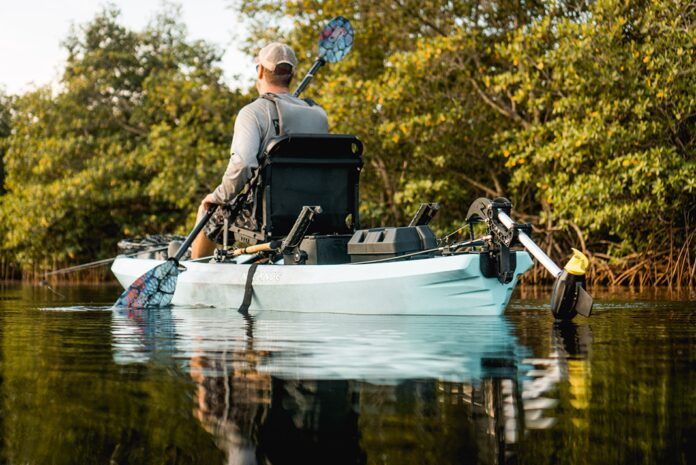
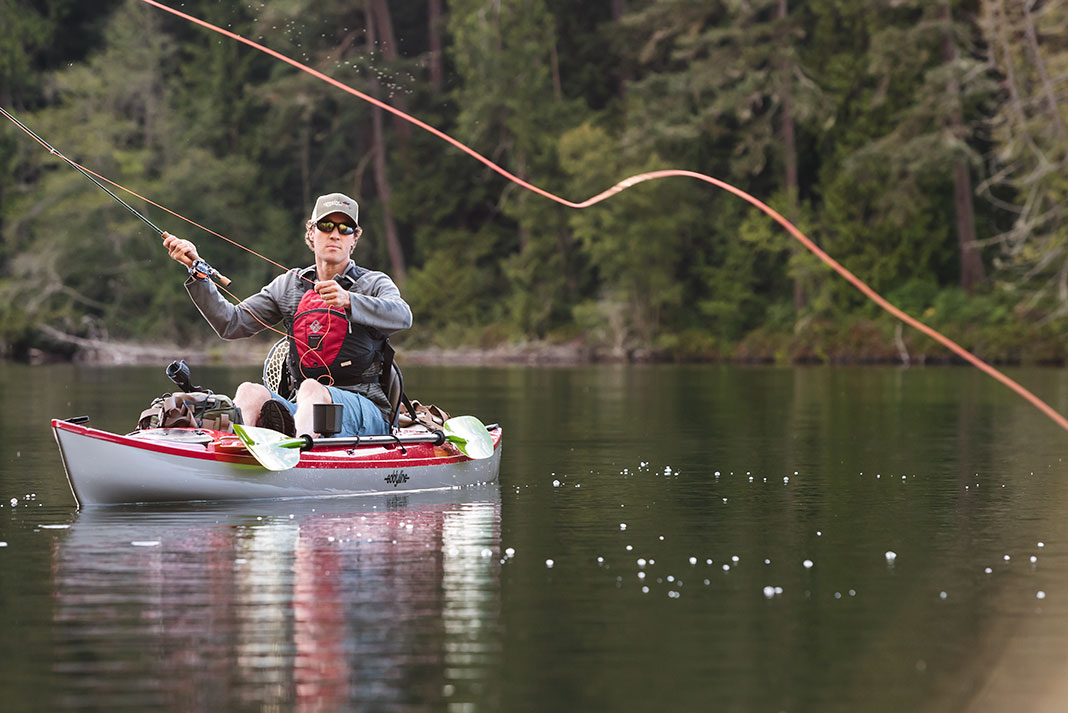
-first_product_boats.jpg)
-first_product_boats.jpg)
-first_product_boats.jpg)
-first_product_boats.jpg)

